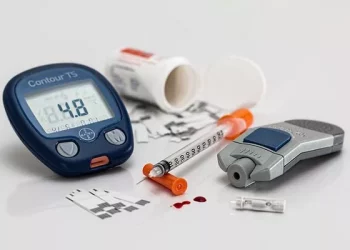Type 2 diabetes is a chronic condition that affects how the body processes blood sugar (glucose). It occurs when the body becomes resistant to insulin or when the pancreas does not produce enough insulin. While medication and blood sugar monitoring are critical in managing this condition, diet plays an equally essential role.
The goal of a recommended diet for type 2 diabetes is to control blood sugar levels, manage weight, and reduce the risk of complications such as heart disease and kidney failure. A carefully structured eating plan not only helps in glycemic control but also supports overall health and energy levels.
Why a Structured Eating Plan Matters
For individuals with type 2 diabetes, choosing what, when, and how much to eat can significantly influence blood glucose levels. Consistency in meals, carbohydrate management, and portion control are key aspects of an effective diabetic diet. A suitable dietary plan should be sustainable, easy to follow, and flexible enough to accommodate personal preferences.
Some people believe that managing type 2 diabetes means avoiding all carbohydrates. This is not accurate. Instead, it’s important to focus on the quality and quantity of carbohydrates. Healthy carbs, combined with fiber, protein, and healthy fats, can help keep blood glucose stable.
Core Principles of the Most Recommended Diet
1. Emphasize Whole Grains and Fiber
Whole grains like brown rice, quinoa, oats, and barley provide fiber, vitamins, and minerals. They have a lower glycemic index compared to refined grains, which means they raise blood sugar more slowly. Fiber helps improve satiety and digestion while promoting heart health. Aim for at least 25-30 grams of fiber daily.
2. Focus on Non-Starchy Vegetables
Non-starchy vegetables are low in calories and carbohydrates and packed with vitamins, minerals, and antioxidants. Examples include spinach, kale, broccoli, cauliflower, bell peppers, and zucchini. They can be included generously in meals without significantly impacting blood glucose levels.
3. Choose Lean Proteins
Protein is vital for tissue repair and satiety. It also has a minimal impact on blood sugar. Recommended options include skinless poultry, fish, eggs, tofu, and legumes. Fish high in omega-3 fatty acids, such as salmon, sardines, and mackerel, support heart health—an important consideration for people with diabetes.
4. Include Healthy Fats
Unsaturated fats from plant sources can help manage cholesterol levels and reduce inflammation. Include avocados, nuts, seeds, and olive oil. Limit saturated and trans fats, which are found in fried foods, baked goods, and fatty cuts of meat.
5. Control Carbohydrate Intake
Portion control and carbohydrate counting are essential for blood sugar regulation. Carbs should be distributed evenly throughout the day to avoid spikes in blood glucose. Use measuring cups, food scales, or carbohydrate counting tools to stay within recommended limits.
6. Limit Added Sugars and Processed Foods
Processed snacks, sugary drinks, and sweetened breakfast cereals often contain hidden sugars and refined carbohydrates that lead to quick blood sugar spikes. Opt for natural sweeteners like stevia or small amounts of fruit if sweetness is desired.
Popular Dietary Approaches for Type 2 Diabetes
Mediterranean Diet
This diet is rich in whole grains, vegetables, legumes, fruits, fish, and olive oil. It is high in fiber and healthy fats and has been linked to improved glycemic control and cardiovascular health. The Mediterranean diet is sustainable, flexible, and backed by scientific evidence.
DASH Diet (Dietary Approaches to Stop Hypertension)
Originally designed to control high blood pressure, the DASH diet also benefits those with diabetes. It emphasizes fruits, vegetables, lean proteins, and low-fat dairy. It is low in saturated fat, sugar, and sodium, promoting overall heart and metabolic health.
Plant-Based Diet
A plant-based diet that focuses on vegetables, fruits, whole grains, legumes, nuts, and seeds can help improve insulin sensitivity. It reduces the intake of animal fats and cholesterol, potentially lowering the risk of complications related to type 2 diabetes.
Low-Carbohydrate Diets
Reducing carbohydrate intake can be effective for glycemic control. Some individuals benefit from a low-carb or ketogenic approach, which limits carb intake to 20-50 grams per day. However, these diets should be adopted under medical supervision to prevent nutrient deficiencies or adverse effects.
Meal Planning Tips
Follow the Plate Method
The plate method is a simple and visual way to manage portions:
- Half the plate: non-starchy vegetables
- One-quarter: lean protein
- One-quarter: healthy carbohydrate (e.g., brown rice, quinoa)
Include a small portion of healthy fats and a serving of fruit if appropriate.
Time Your Meals Consistently
Skipping meals or eating inconsistently can lead to unstable blood glucose. Eating at regular intervals supports better glucose control and reduces hunger-driven overeating.
Use Smart Snacks
Choose snacks that combine fiber and protein, such as Greek yogurt with berries, a handful of almonds, or sliced apple with peanut butter. Avoid snacks that are high in sugar and refined flour.
Drink Wisely
Water is the best beverage choice. Unsweetened herbal teas, black coffee (in moderation), and sparkling water are acceptable. Avoid sugary drinks and limit alcohol intake, as they can interfere with blood sugar management.
Understanding Glycemic Index and Load
The glycemic index (GI) ranks foods based on how quickly they raise blood sugar. Low-GI foods (such as lentils, sweet potatoes, and most fruits) cause a gradual rise in blood sugar, making them preferable. Glycemic load (GL) takes into account the portion size and gives a more realistic picture. Combining high-GI foods with protein, fat, or fiber can lower the overall GI of a meal.
Special Considerations
For Overweight or Obese Patients
Weight loss improves insulin sensitivity and can lead to better control or even remission of type 2 diabetes. A calorie-controlled diet with increased physical activity is essential. Even a 5-10% reduction in body weight can produce significant benefits.
For Patients with Kidney Disease
Some individuals with diabetes also develop kidney complications. In such cases, a renal-friendly diet with restricted sodium, potassium, and phosphorus is required. Protein intake may also need to be adjusted.
For Older Adults
Elderly diabetic patients may require more frequent nutritional monitoring. Preventing malnutrition, ensuring food safety, and considering mobility issues during food preparation are important factors.
Supplements and Diabetes
While a balanced diet typically provides all necessary nutrients, certain supplements may be beneficial in some cases. For instance:
Vitamin D: Often low in people with diabetes; may improve insulin function.
Magnesium: Helps with insulin sensitivity and glucose metabolism.
Omega-3 fatty acids: Support cardiovascular health.
However, supplements should not replace whole foods and must be used with medical supervision.
Monitoring and Adjusting Your Diet
No one-size-fits-all diet exists for type 2 diabetes. Frequent blood sugar monitoring helps determine how specific foods affect your glucose levels. Use this data to fine-tune your eating habits. Logging meals and glucose readings can help spot patterns and improve outcomes.
Work with a Registered Dietitian
Personalized advice from a registered dietitian is invaluable. A professional can help tailor your diet to fit your health status, medications, preferences, and lifestyle. They can also educate on label reading, dining out, and managing holidays or special occasions.
Conclusion:
Managing type 2 diabetes through diet is not about restriction—it’s about making informed and consistent choices. The most recommended diet is one that includes whole, unprocessed foods, balances carbohydrates, and aligns with your body’s needs. Whether you follow a Mediterranean, DASH, or plant-based approach, the principles remain the same: eat with purpose, monitor your response, and adjust as needed.
By focusing on the long-term benefits and working closely with your healthcare team, including your doctor and dietitian, you can take control of your diabetes and lead a healthy, fulfilling life.
Related topics:
Is Milk Good for Diabetics Patients?
























